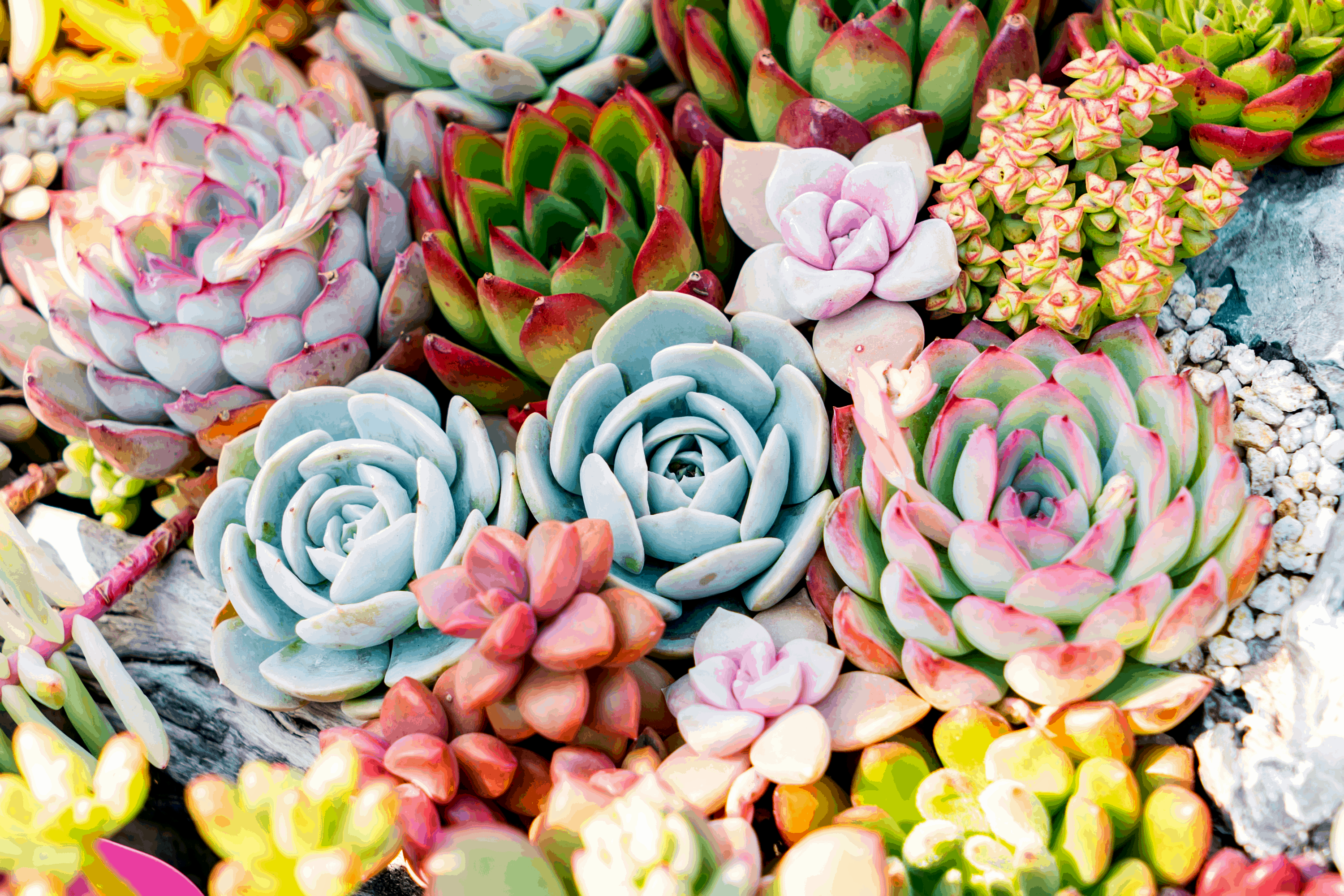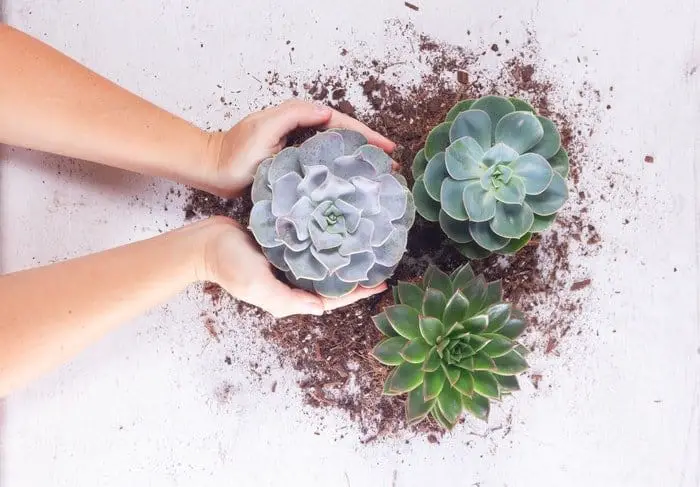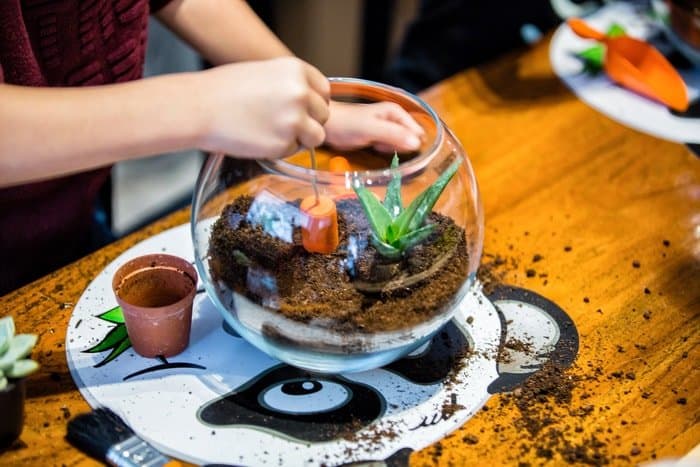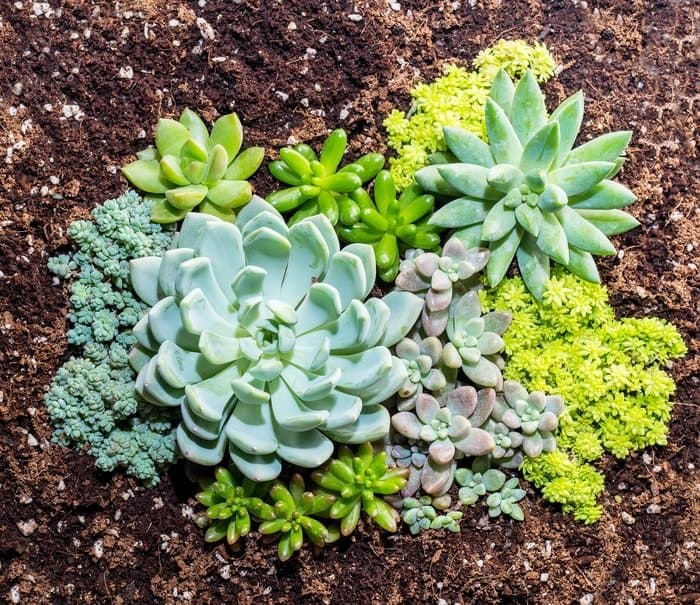Last Updated on February 2, 2022 by Cinthia
Do you ever find yourself frustrated at your dying succulent? I mean, didn’t you just buy it a couple of weeks ago? Nevertheless, are you now looking for a solution after knowing that it’s a type of succulent, supposedly hardy with a low-maintenance cost? If so, then this post is for you, learn how to prepare the best succulent soil.
Personally, I had the same problem. And because of it, I had to research and do a lot of observations before I later discovered that they are only two possible causes of death among succulents: overwatering and planting on the right kind of soil.
So as an enthusiast, I decided to put it to a test by watering it only when completely dry. Yet still, there was no positive outcome. Thus, I decided that I’d examined the soil, given the critical role it plays in their growth, as observed from the research. Finally, things seemed to start going well, after I concocted the right mix for the best soil to grow succulents.
Meaning of Succulents
Popularly known to be hardy and low-maintenance, succulents have thick, fleshy leaves or stems for water storage. The main reason why they require little of it.
Although they thrive most in arid, desert lands, can be grown indoors or outdoors, they can still survive in any kind of weather conditions, not necessarily hot climate. This is the prime reason why succulent propagation has become a worldwide craze.
Importance of Good Soil
Given that they require little water, they grow best in porous, sandy, and well-drained soil. In How to Take Care of Succulents, Amy Andrychawicz describes a well-draining soil as one that will hold enough water for the plants to absorb what they need but still dries out quickly so roots won’t rot.
Succulents need this for anchorage, nutrients, and moisture. Thus, the quality of soil will help you determine the best ingredients to mix, which will provide it with healthy and rapid growth.
Nurseries and local garden centers in your area sell pre-mixed “Cactus and Succulent Plant Soil” which are available anytime.
And, you can also order online, pre-mixed soils that contain peat moss. When peat moss dries out, it repels water, succinctly giving the pre-mixed soil the tendency to clump together when left longer in the pot.
How to Make Your Own Succulent Soil
Doing your own succulent soil mixture is simple, cheaper, controllable and 100% guaranteed to yield better-growing plants.
As a matter of fact, it’s cheaper than buying premixed bags of succulent soil. In this recipe, you can even use the soil from your garden because based on my years of gardening experience, mixing the native garden soil with pre-mixed soil amendments, will even boost their growth tolerance.
When they outgrow their containers, move them outside to lessen the stress of having an entirely new soil environment.
It is easy to prepare and follow. Once you have all the ingredients, the needed containers, and mixing tools, you’re all set.
At this point, you are in control and can adjust the number of materials you put in it, to meet your desired texture, density and quantity. You can even prepare more and store them for future use. Personally, I used this mixture in my garden for years and it yielded more than healthy succulents.
Materials for the best succulent soil mixture:
1. Coarse Sand. It is light, easy to dig, warms quickly, and rich in oxygen. It doesn’t hold moisture so it is ideal for proper drainage.
2. Native Soil. Depending on your soil type, you can adjust to add more or less of it. If it is loamy, it will have a good balance of clay, silt, sand, and a generous amount of organic matter.
If you’re used to burying your “kitchen scraps” and adding commercial compost into your garden, then you will have a supply of homemade compost, a good source of worm castings, and other micro-organisms beneficial to your succulents.
Concerning the soil’s pH balance, you can take a handful to your nearest garden center to make it slightly acidic. But with the silty and clay type, 1⁄4 part is enough.
3. Perlite. This is a form of volcanic glass, that when heated for a long time pops into a white, round material used in seed starting and potting mixtures to lighten the soil. It helps in channeling more air around the roots of the plants for water retention and proper drainage.
4. Pine Bark Fines are the greater form of the bark of Pine trees. They also help retain moisture and add nutrients to the soil as they slowly decompose. I prefer the ¼ inch “Pine Bark Fines” of Bonsai Jack which is available at Amazon.com.
To do this mixture, you’ll also need mixing containers, a trowel, measuring cups, and gloves. Make sure you use a mixing bucket with lid for storage. Personally, I prefer mixing with my hands than using the trowel, to ensure that there are no lumps and that ingredients are evenly distributed.
Recipe for the Best Soil Mixture to Grow your Succulents
- 1 Quart Coarse Sand
- 1 Quart Perlite
- 1 Quart Pine Bark Pines
- 2 Quarts Native /Garden Soil if loam; ½ Quart if clay or silt type
Steps
1. Dump. Using a 2-gallon container, dump in the materials, starting with the Native/Garden Soil or its substitute, “Miracle-Gro Potting Mix“ and Compost.
Using a trowel or your gloved hands depending on your preference, look for any lumps, and make sure you break them.
2. Add the remaining ingredients one at a time to make sure they’re thoroughly incorporated in the mixture.
3. Take time to look at your mixture when done to ensure everything is properly blended.
Congratulations! You just concocted the best soil mixture for your succulents. Who knows, when Morningchores.com conducts its next pick for the best succulent soil mixture, it will be on its list.
Start repotting your succulents using this homemade recipe, and be prepared to nurture healthy succulents in the days to come.
If you find this article helpful, please don’t hesitate to share it with your friends. Cheers!
FAQs
What type of soil do succulents grow best in?
Succulents are plants that can survive in harsh environments and thrive even in dry conditions. They are popular plants to keep around because they are easy to maintain and do not require much water or care.
Succulents grow best in soil that has a high drainage rate, is sandy and full of nutrients, with a pH level of between 6.5-7.5 or have a neutral pH level with little to no trace elements.
Can you put succulents in normal soil?
The answer is yes, you can put succulents in normal soil. It depends on the type of succulent.
Succulents are typically an easy plant to grow and are generally low maintenance. They don't require a lot of water or fertilizer, so they're great for first-time gardeners or people who struggle to keep plants alive due to time constraints.
Besides being a low maintenance plant, succulents have another perk: they're resilient and long-lasting. If you're looking for some more plants that will provide fresh color throughout the year and installation that's easy and low-cost, your best bet is with succulents.
Are clay pebbles good for succulents?
Clay pebbles are very popular and have a lot of uses in gardening. They can be used as drainage for succulents and also as a hiding spot for the plant’s roots. Some people even use them as planters to grow succulents in their house!
When should succulents be watered?
Succulents are low-water plants, which means that they need less water than other plants. However, they still need to be watered. You should check the soil moisture in your succulent before watering it.
Succulents can be watered when the soil is dry to touch and the leaves start looking wilted.
Do succulents need direct sunlight?
There is no denying that succulents need sunlight in order to be happy and healthy.
Some succulents should be grown outside, but other plants should be grown indoors like cacti. Succulents such as aloe vera and echeveria can be grown outside while other common succulents such as sedum and euphorbia should stay inside.
Where should I put succulents in my house?
Succulents are one of the most popular plants in the world because they’re easy to care for and add a natural charm to any room.
Succulent plants are low-maintenance and are not only incredibly easy to grow but their roots also require very little water. They can be placed anywhere in your home, although there are some places that you should avoid.
Succulents are perfect for a windowsill, living room, or bathroom. But there are many other places you would want to put them in your house like your hallway, kitchen, dining room.
What is succulent potting mix?
Agave is a type of succulent, and the perfect option for your backyard or as a houseplant.
But did you know that it requires special potting mix to thrive?
The plants need the right mix of ingredients to prevent the soil from drying out and to keep them hydrated.
Succulent plants need their soil to be porous in order to shed water easily.
There are various types of potting mixes, including peat-based or coir-based mixes. You can also use a combination of sand, vermiculite, and perlite if you want to grow a succulent plant.
Many stores offer a wide variety of succulent plants in pots that come with their own potting mix. However, you can make your own mix by mixing equal parts sand and perlite with coarse orchid compost.
Tony Manhart is a passionate gardener who has been tending to gardens for over 20 years. He takes pride in creating beautiful outdoor spaces with plants, trees, and shrubs that can thrive in any environment. He loves to share his knowledge with others and has taught classes on gardening basics and advanced techniques. He is committed to sustainability, using natural and organic methods to create and maintain gardens. He also works with local organizations to create green spaces for communities. When he’s not gardening, Tony enjoys hiking, reading, and spending time with his family.




